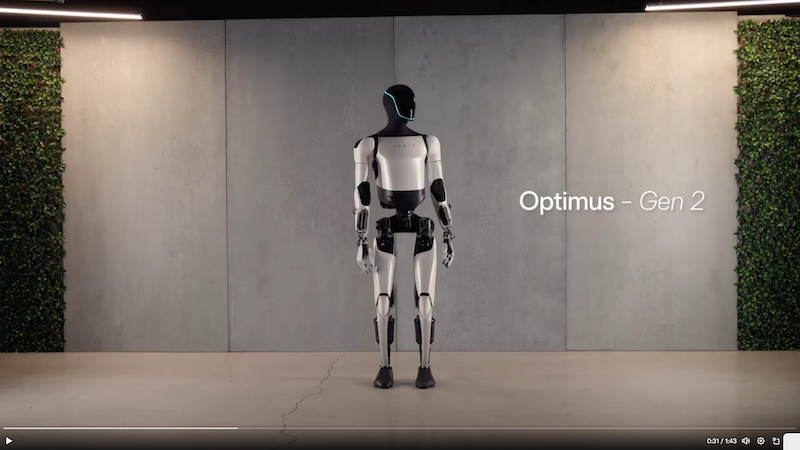Tesla has unveiled a slew of upgrades for the 2 generation of its Optimus humanoid robot, showcasing noticeably swifter and more dexterous movement, advanced bot sports a bevy of sensors, actuators, and redesigned components that enable more nimble mobility.
Gone is the slower, clunkier gait of the early Optimus prototypes. This version zips around at a 30% quicker pace thanks to enhanced foot construction and balance. New actuators also allow smoother neck rotation and arm articulation, bringing its gestures closer to human-like fluidity.
According to Tesla AI director Julian Ibarz, “Everything in this video is real, no CGI. All real time, nothing sped up. Incredible hardware improvements from the team.”
Indeed, the Optimus Gen 2 bot displays eerily organic motor functions like graceful wrist curls, leg raises, and torso twists, demonstrates the tremendous progress Tesla’s engineers have achieved in constructing responsive robotic frameworks.
The complex integration of custom skeletal parts, sensors, and neural network programming enables Optimus’s growing physical prowess. From the neck’s 2-DOF actuated design to integrated electronics in each actuator, Optimus Gen 2 clearly implements major under-the-hood upgrades.
With a 22lb weight reduction from the previous model, the newest Optimus carries less bulk while benefiting from the torque and motion detection of stronger yet lighter components. Force and pressure sensors in the robot’s feet also provide vital feedback for balance and gait improvements.
All these hardware and software advancements translate into an Optimus capable of faster, more adaptive, and human-like autonomy. As it masters tasks like sorting blocks by color purely through its own learned visual perceptions, Optimus gets one step closer to the ultimate goal – independently performing dull, dangerous, or repetitive jobs to aid human workers.
Tesla’s long-term ambitions for Optimus stretch even further, envisioning the robots eventually handling everything from making deliveries to caring for the elderly. But successfully navigating such open-ended real-world situations requires mastering far more organic, improvisational movement first.
That’s why flashy upgrades like a 30% walking speed boost or 2-DOF neck matter so much. They inch Optimus out of rigid automation into the realm of general intelligence and problem-solving. This allows Tesla to keep perfecting the algorithms and mechanics that may one day enable multi-purpose bot helpers in our everyday lives.
Related posts: Tesla’s Optimus Demonstrates Autonomous Object Sorting, No Task-Specific Programming
